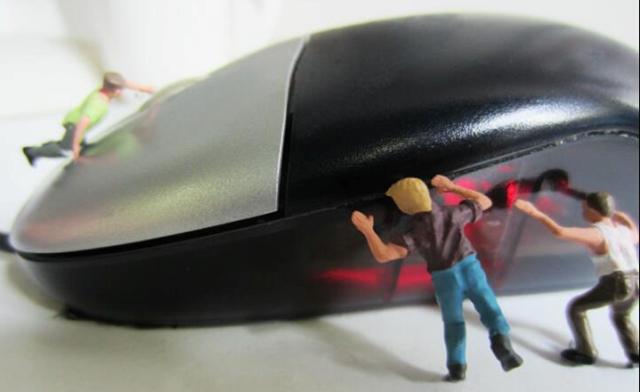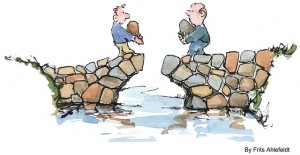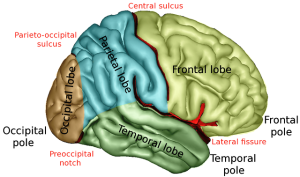
Is it possible to have access to every available technique, gadget, app and technology for people with brain injury?
I confess before we begin that I am being an opportunist here. I do love gadgets and technology. As part of the ever- increasing “Wow that’s amazing” kind of stuff that is being developed I kept reading about different ways they were being used by, and for people with brain injury.
So I have gathered links and resources rolled it up into this article.
I do also have a strong view that we should be using all we have available to enable people to live a full meaningful life. For me, Wolf Wolfensberger says it all:
Vastly more knowledge and technology exists about how to advance people toward their potential than is known by, or utilized in, any one service; therefore, no matter how good any service or agency is, there still may exist a better way
(Wolf Wolfensberger quoted in Lemay R, “The implications of adopting a resilience model” Institut Valor. 2006).
If you do know of any examples please share in the Comments below.
The way I see it the world is upside down. It should be a person living with brain injury (or any issue preventing them living a full life wh0 should have the access to training and resources invested in Olympic sports people.
IMAGINE THAT!
 Anyway back to gizmos and gadgets.
Anyway back to gizmos and gadgets.
I agree it does not always need to be complicated technology. A simple aid, or intervention can make a very big difference.
Recently when talking to the Stroke Support Group one of the men told me of a piece of equipment that made a huge difference to his ability to do things for himself after Stroke. That piece of equipment was a bed-pole. No high technology. No complex installation. No new age gadget – it was a simple aid that has been around for many years.
Today my gadget loving nature is going for the WOW factor. More the gadget and technology for people with brain injury.
Consider what follows as just a taster for what exists in the world. It does not cover “the world” and it does not cover ALL there is available. These are more my very own ideas-fest on what is possible.
A Festival of Gadgets, Gizmos and Technology for People with Brain Injury
Here is my collection of links and resources, with my own interpretation of what each one is all about. Any further examples, and any correction on the information provided would be very welcome. I am no tech genius, just an interested party trying to make sense of amazing advances – all ongoing learning appreciated.

Retraining the brain to use paralysed areas
This technology was originally designed to help improve skills in professional athletes.
Now it is being used to help regain motor skills and visual processing. It is a kind of game with a big screen, lights, and buttons. You compete against yourself to improve skills.
Retraining the Brain to Recover Movement
Robots assisting in the recovery of movement
Research around ‘Robot lead rehabilitation’ for upper limb movement. Amazing! The real person does the suggested movements themselves. Any movement they are unable to do the robot does for them. This leads to a retraining of the brain in the real person. Oh and the robot is programmed to do the exercises so you probably can’t make it do rude signs.
Using Twitter to assist memory
I do not believe we have discovered the full benefit Twitter as a helpful tool yet. Tom Dixon is one person who has taken the tool and uses it to supplement memory loss. Tom was already a user of technology when he had a brain injury. ‘Old fashioned’ strategies such as using a paper diary were not working for him so he looked at what he was used to and good at.
You can watch a clip with more detail HERE
I am VERY interested to hear from anyone who has discovered ways to use Twitter (or any other form of Social Media) to assist them. Please share in the comments below. I do intend to use this information in the future, it beckons as a great idea for an article.
Assisting with Cognitive difficulties Using Phone Apps
Where technology for people with brain injury is familiar then Apps on mobile phones and tablets can be worthwhile. Hopefully we will see many more Apps developed to assist people live life meantime here is a list compiled by Brainline . If you are checking out any of these links there are helpful hints and more Apps provided in the Comments section after the Brainline article.
There are two slide shows:
1) Dedicated to those who use I-phones or I-pads I-PHONE APPS
2) For those of us who love our Android ANDROID APPS
Accessing Specialist Care Remotely Robots Assisting Doctors
Telemedicine is now being used in many ways to assist people in areas of the world where specialist care may not be available.
In this example a robot wanders around and sends information back to a doctor who can then hopefully remotely assess and maybe suggest treatment for a patient. In what seems a very science fiction scenario the robot moves around a hospital visiting patients, using two-way video and audio feeds data is sent to the doctor. There was not a mention of robot bedside manner?
Assistance with Driving after Brain Injury
Advances in vehicle technology such as built in GPS systems, automatic parking, may assist people with brain injury who wish to return to driving. This study looks at the current vehicle technology and adaptive equipment that might help compensate for difficulties and improve safety. While this might not seem as science fiction fantastic as other new modes here. Driving can be a key issue after brain injury.
Supporting study
Often when researching one topic I find information that relates to another idea. I found this site when looking for information about “hidden non-apparent disability”. At the University of Hawai‘i The Center on Disability Studies (CDS) provides information on levels of assistive technologies from lower to high tech. Technologies that may help with study and other activities of daily life:
1) Types of Low-Tech Assistive Technology
2) Types of High-Tech Assistive Technology
3) Types of High-Tech Universal Assistive Technology
“10 Gadgets and Strategies for Caregivers”
Technology can also assist family, friends, people supporting a person with brain injury. I did think the 10 gadgets listed would also be useful technology for people with brain injury. One example the Electronic Pill dispenser sounds very useful to eliminate the worried thought of “Have I taken my pills today?”
The “View Article Sources” at the end of 10 Gadgets article is worth having a look at for further resources.
For FURTHER READING: The Brain Injury Association of America has a range of articles and research on assistive technology for people with brain injury. Oops I tried to be clever here and include the search without success, so on the site type ‘Assistive Technology’ and you will get a range of articles and resources.
Working Together on Solutions

Sometimes invention, education or adaptation is needed for gadgets, gizmos and technology for people with brain injury. There are many people and organisations around the world that focus on improving the quality of people’s lives by developing or adapting gadgets and technology.
Here are just four (randomly chosen from English speaking sites) examples:
Solve Disability Solutions working to solve equipment difficulties by modifying or inventing a solution
Speaking Minds Foundation working on communication interventions that are affordable and accessible
Abilitynet works to “change the lives of disabled people by helping them to use digital technology at work, at home or in education.” They have provided information for adapting and using computers after brain injury.
OTs With Apps and Technology – this Blog was not so randomly selected. I came upon it when looking for the source of Tom Dixon’s article on Twitter. And I was very glad I did. As it says in the title the Blog provides information on “new tools, apps, equipment and resources”.
In Comments below please share any effective App, Gadget, Program, Aid, Equipment, Technology you have seen in action, or used yourself. What is it? What does it do? How does it help?
Alternatively you can email me HERE. I would very much like to expand the list.


Pingback: Living with Brain Injury in the 21st Century - Changed Lives, New Journeys